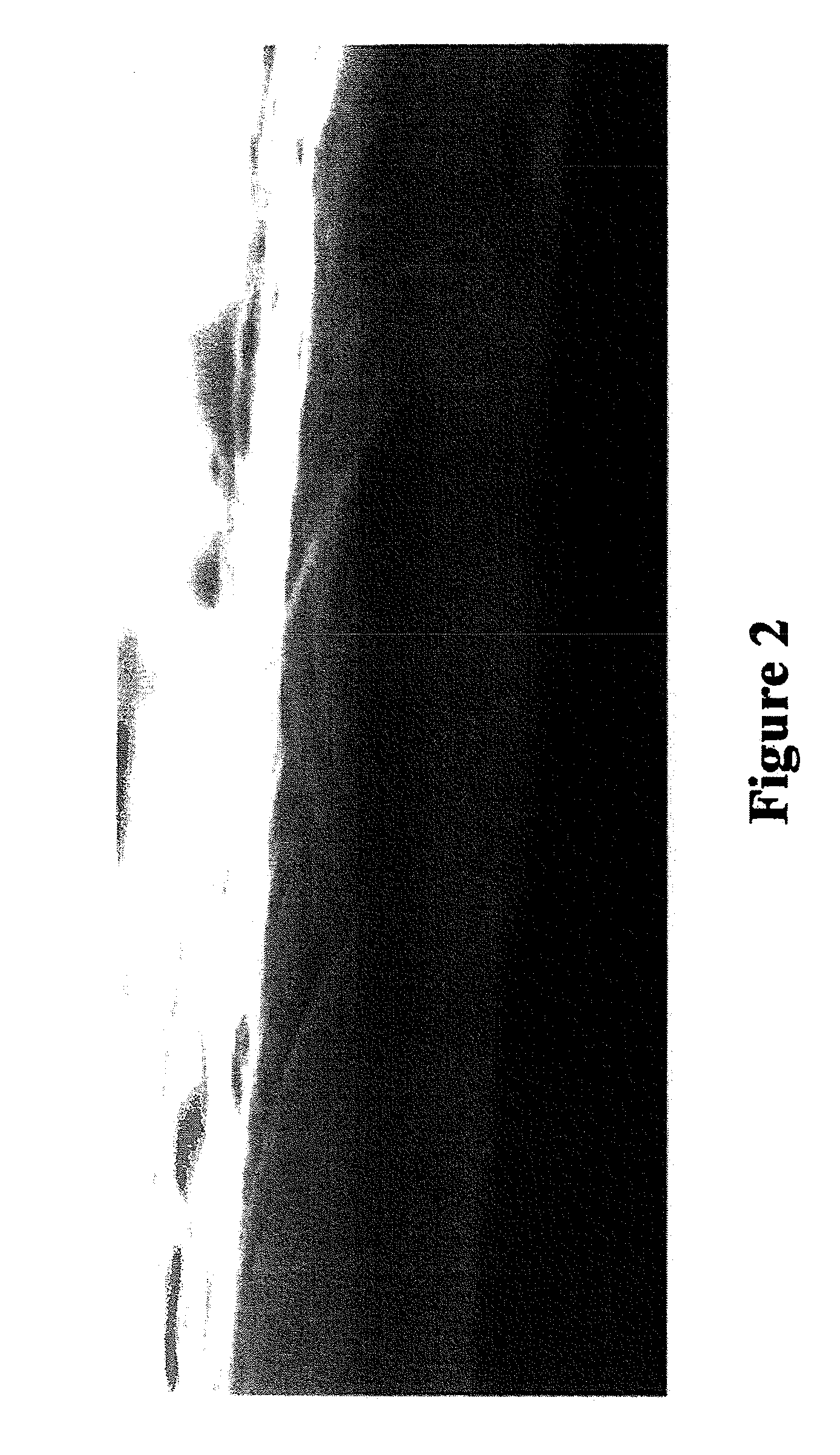Method of making foraminous microstructures
a microstructure and foraminous technology, applied in the field of foraminous, porous microstructures, can solve the problems of poor scalability, high cost, and limited application of photonic crystal fiber fabrication methods, and achieve the effect of improving the scalability and scalability of the material, and achieving the effect of improving the scalability and scalability
- Summary
- Abstract
- Description
- Claims
- Application Information
AI Technical Summary
Benefits of technology
Problems solved by technology
Method used
Image
Examples
example
[0054]The invention is further illustrated by the following example. A Ni—Cu system is illustrated because it is among the best established electrodeposited multilayered systems, has interesting magnetic properties and is easily fabricated. A rugate mirror is further chosen to demonstrate the versatility and precision of the invented method, since the continuously modulated composition profile of a rugate filter together with the processing difficulty of metals have posed a great challenge for the current fabrication techniques. To demonstrate the precision of the method, a porous Ni-based multilayer film with each layer of 10 nm thickness is constructed.
[0055]A Ni—Cu multilayer film is grown by electrodeposition in a deposition solution containing 0.5 M nickel sulfamate (Ni(H2NSO3)2) and 0.05 M copper sulfate (CuSO4) buffered to pH 2.5 with boric acid (H3BO3). A typical three-electrode cell is used, with an ITO glass or Au coated Si wafer as the working electrode, a Pt spiral wires...
PUM
| Property | Measurement | Unit |
|---|---|---|
| size | aaaaa | aaaaa |
| thickness | aaaaa | aaaaa |
| thickness | aaaaa | aaaaa |
Abstract
Description
Claims
Application Information
 Login to View More
Login to View More - R&D
- Intellectual Property
- Life Sciences
- Materials
- Tech Scout
- Unparalleled Data Quality
- Higher Quality Content
- 60% Fewer Hallucinations
Browse by: Latest US Patents, China's latest patents, Technical Efficacy Thesaurus, Application Domain, Technology Topic, Popular Technical Reports.
© 2025 PatSnap. All rights reserved.Legal|Privacy policy|Modern Slavery Act Transparency Statement|Sitemap|About US| Contact US: help@patsnap.com



